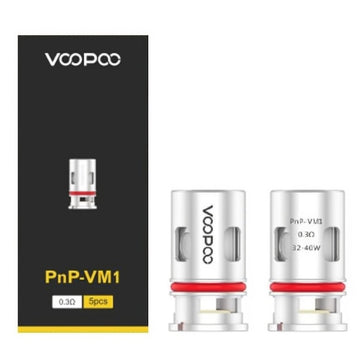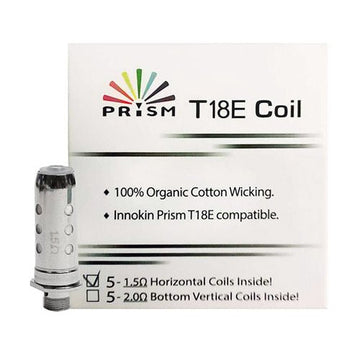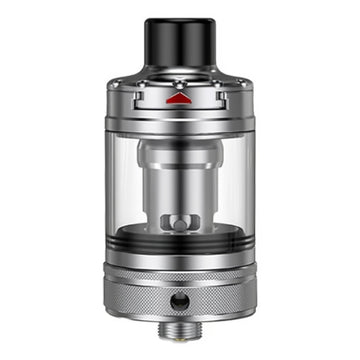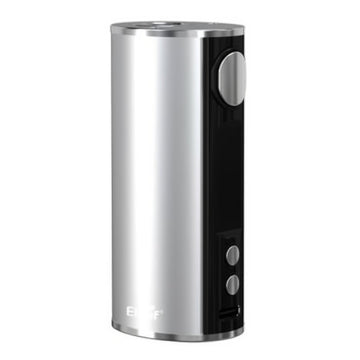At Oxford Vapours we love mechanical mods. For most of us it is where our journey beyond ‘ego twists’ began and how we have ended up falling in love with the flavour and vapour production of drippers and rebuildable tanks.
We stock a decent range of affordable genuine mechanical mods and drippers in-store and we love setting people up with their first mechanical systems – running through the art of wrapping, micro-coiling, spacing and wicking with customers looking for the ultimate in vaping experience.
But we take safety seriously and there are a few things you need to know if you are venturing into the world of mechanical mods. It’s not rocket science, but there are some basic principles you will need to adhere to, to make sure you are vaping safely.
Ohms Law
Ohms law is an equation that will work out for you the amount of energy current you are drawing from your battery whilst you vape a mechanical mods.
It is important to know this because you need to make sure you are draining a safe amount of energy from your battery at all times. All batteries will come with an amp rating – this amp rating is the maximum capacity for continuous firing, meaning that you can safely discharge this amp rating, 25 AMPS for example, continuously until your battery needs recharging at 3.6 volts.
To work out the amount of AMPS you are drawing from your battery you need to use this one simple equation;
I = V / R
Where ‘I’ is current (AMPS), ‘V’ is voltage and ‘R’ is resistance.
A fully charged ‘vape-safe’ battery will hold 4.2 volts. So if we have a coil that we have built at 0.5 ohms we can work out the equation as:
4.2(V) / 0.5 OHMS = 8.4 AMPS
So we can see that if we have a battery with a 25AMP rating like the Samsung 25R, we are well within the safety limits for firing this 0.5 OHM coil.
If we want to explore the limits of a 25AMP battery, we can look at the lowest resistance that stays within a 25AMP limit with a fully charged battery at 4.2 volts.
4.2(V) / 0.21 OHMS = 20 AMPS
So a coil with a resistance of 0.21 OHMS draws 20 AMPS from a freshly charged battery. This is the limit of the battery’s continuous current drain as you always want to keep 5 AMPs of headroom ie. if you have a 25AMP rated battery, you can push it to 20 AMP and stay well within the safe power drain.
If you have a higher AMP rated battery, like the LG HE4 35AMP 18650 battery you will have more amp headroom to play with and can build even lower resistance coils, the LG HE4 35AMP 18650 battery for example can handle 0.15 OHMs safely.
As well as a ‘continuous’ AMP rating, your battery will also be able to handle more AMPS being drained in short periods (1 or 2 seconds for example) – this is called a ‘pulse rate’ and should only be considered by those with an advanced understanding of battery capabilities as it does come with risks if you push your batteries too far or too low. We think it’s safest to stick to the continuous current rules. You will be chucking huge clouds with coils that have a resistance of 0.21 ohms!
You can read more about ohm’s law here
You can also use an Ohm’s law calculator like this one
Ohm Meters
With mechanical mods, you generally won’t have an LED screen that displays the resistance (OHMs) of the coil that you have made – if you do not use an ohm meter, you are going to be approaching Ohm’s law and battery safety completely blind. It is very important to know the resistance of the coils you are building so that you can figure out how much power you are drawing from your batteries.
We have used a lot of different ohm’s meters at Oxford Vapours HQ and nearly all of them have been very cheaply/poorly made and have extremely inaccurate readings – even a lot of budget to intermediate regulated box mods with an LED reading of your coils resistance are inaccurate by up to .5 ohms – this tolerance can mean the difference between you drawing a safe and an unsafe amount of AMPS from your battery.
We have literally scoured the globe to find Ohm Meters that we can rely on for quality, are fully serviceable and have an accuracy that you can trust.
We found the USA Ohm Meters ‘Ultimate Ohm Meter’ that has an accuracy of +/- 0.018 Ohms! Reads from 0.00 to 5.00 Ohms and is completely serviceable. We’ve worked hard to bring this quality USA made product to the UK market at a price that’s £100s less than anything as near as accurate.
This is the only Ohm Meter on the global market that we are confident to sell to our customers – trust us… we have tried the lot!
Batteries
It is very important to purchase and use the right batteries when using a mechanical mod. Not all batteries are created equally and it is a bit of a minefield out there with companies ‘re-wrapping’ batteries and not disclosing the actual manufacturers or specs and an unfortunate amount of companies creating ‘fake’ batteries and copying branding, meaning you just won’t know what chemistry or limits the battery you bought have.
The best advice we can give is to buy a major brand unregulated battery from a reputable retailer – ensure that your battery has at least a 20AMP rating – ideally 25+ AMPS for sub-ohm vaping.
We stock the Molicel P28A 18650 battery, one of the most reliable and well regarded battery on the market currently.
Battery tips & trips
1. Never drain your batteries past 3.3 volts – ideally always recharge them at 3.6 volts.
2. If you drain a battery past 3.3 volts, if it shows signs of heat damage or has dents from being dropped – recycle it and buy a new battery – it is no longer safe to use.
3. If your battery’s plastic wrap is melted or peeling away, replace it – heat-shrink battery wraps can be brought very cheaply and applied with a hairdryer.
4. If your mech mod for some reason get’s stuck firing with a battery inside for longer than 10 seconds it may no longer be safe to use – put it on your charger – if it shows any abnormal behaviour, recycle it and buy a new battery.
5. Every rechargeable battery has an average life span of 300 charge cycles. For most people this will mean that they last approximately 8-12 months. It is ideal to replace them after this time. If they show signs of not holding their charge or not charging fully, recycle it and buy a new battery.
6. Never over-charge your batteries. An 18650 should take about 3hrs to charge from 3.6 to 4.2 volts – NEVER leave them overnight unless you have a smart charger like the Xtar VC4S that will stop charging batteries when fully charged. Always use a good charger from a reputable vendor. Cheap chargers could use too much power which can be dangerous for battery cells.
Coil building advice
When building your own coils, there is a lot to take in to consideration and many factors that will change the resistance (OHMs) of your build.
Gauge of wire
Kanthal, the most commonly used metal for coils and generally regarded as the safest, comes in varying gauges from 0.3mm (28 gauge) to 0.8mm (20 gauge) and even higher.
The thinner your wire (or higher the gauge) the higher your resistance in OHMs – the thicker your wire (or lower the gauge) the lower your resistance will be.
Quick guide to different thickness/gauges:
0.3mm (28g) – 0.4mm (26g) – best for rebuildable tanks with a small build area – will result in higher ohm coils, roughly between 0.6 & 1.6 OHMs.
0.5mm (24g) – The best all round wire for drippers with a decent size build deck – will roughly result in coils with a resistance of 0.2 – 0.7 OHMs.
0.6mm (22g) – 0.8mm (20g) – This thicker wire is for those building very low resistance coils for use in dripper with a very large build area. Using this wire will result in coils roughly around 0.1 – 0.3 OHMs
Another defining factor of the resistance of your coils is how many wraps and how many coils you are using in your dripper or rebuildable tank.
The more wraps you make, the higher the resistance in OHMs – as a rule of thumb, you want to be using at least 4 wraps per coil. For beginners it is advisable to use at least 6 wraps in a coil. For some single coil builds, you may use up to 10-15 wraps depending on the size of your build deck and the thickness of your wire.
However, if you build a dual-coil ie. two coils in the same dripper or rebuildable tank, your resistance will HALF.
for example…
if your single coil (1) = 0.5 OHMs
a dual coil (2) using same wraps = 0.25 OHMs
a quad coil (4) using same wraps = 0.125 OHMs
That's just a few tips for starting out! We are always more than happy to run you through coil building hands-on during the week in the shops where we can go into more detail to help you achieve your perfect builds.
Wicking Material
There are many different types of wicking material on the market, ranging from extremely cheap to really quite expensive – each one has slightly different properties making it better for certain applications. We stock Japanese Cotton for drippers and Cellucotton for Rebuildable Tanks at very competitive prices.
Here’s a quick run through of different wicking materials and their pros & cons…
Organic Cotton Balls
You can pick up organic cotton from high-street shops very cheaply and as long as it is unbleached and untreated it will be fine to vape with – you may not get the very best flavour possible and it will give you a dry hit when burnt, but will cost pennies to use.
Cellucotton
Cellucotton is a type of man made cotton where all the fibres run in the same direction making it extremely efficient at wicking and very good for using in Rebuildable Tanks. It also gives you a very clean flavour and a reasonably high-burning point. It’s also still pretty cheap to buy.
Japanese Cotton
Japanese Cotton is very highly regarded for use in drippers – it has a high burning point and uses untreated organic cotton. It is advisable to remove the very top and bottom layer of the pad you will receive to get to the very high quality cotton inside. Japanese Cotton is also still extremely affordable.
High-end Organic Cotton
There are now a range of high-end cottons on the market, treated specifically for vaping – these can be extremely expensive but tend to have extremely high burning points (will not burn, even when dry) and very clean flavour – it may be worth considering these cottons if you are building very low OHM coils or take your vaping very seriously!
When it comes to tips for wicking, there is really only a couple of pointers…
Just enough cotton
It’s important that the amount of cotton you thread through your coils is not too thick or too thin. Too thin and the parts of your coils that are not making contact with the cotton will get too hot, creating a hotspot and meaning that the rest of your coil will not heat evenly. If your cotton is too thick inside your coil, the juice will not flow easily to the middle and your cotton will dry out too quickly, risking a dry-hit which is not pleasant!
Space under your coils
For most types of builds, you will be tucking your cotton under the ends of your coils. When doing this, you want to ensure that you leave a nice amount of space directly under your coil so that air can flow through this space. You will get a lot more vapour production this way and better flavour all round.
We’ve tried to compile a brief run through of everything we think you need to understand with the above subjects, but it’s only the very basics. We are always happy to answer any questions in-store or via social media.
We hope you enjoy vaping safely and responsibly!


















